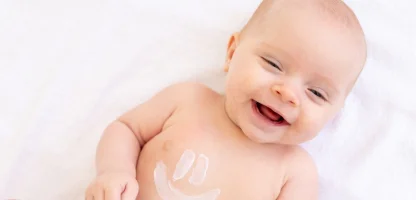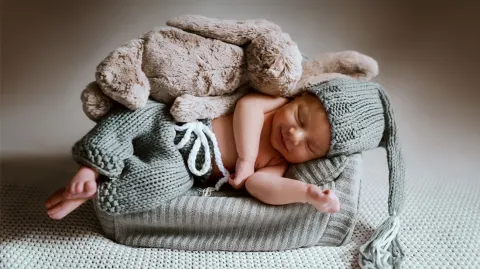How Safe Are Baby Wet Wipes?
Wet wipes are one of the most frequently used baby care products that make parents’ lives easier from day one. From diaper changes to cleaning hands after feeding, from outdoor hygiene to cleaning toys they are used constantly throughout both the newborn and toddler period. However, the fact that wet wipes directly touch the baby’s skin several times a day makes one important question unavoidable: are they truly safe? When examining the ingredient list, you often come across many chemicals that are not easy to understand. This is why analyzing wet wipe ingredients is extremely important for baby skincare safety.
Baby skin is far more permeable and sensitive than adult skin. Because the skin barrier is still developing, babies are more vulnerable to irritation and moisture loss. Products that come into direct and frequent contact with the skin can penetrate faster and may have a higher potential to trigger reactions. Considering wet wipes may touch a baby’s skin 15-20 times a day, ingredient awareness becomes a must not a preference.
One of the most debated ingredients in wet wipes is fragrance parfum. Fragrance is added to provide a pleasant smell experience, yet it is also one of the most common irritation triggers in babies. Many dermatologists recommend fragrance free wipes for newborns and sensitive skin groups. For example, the Sensitive series from Sleepy, Uni Baby’s Newborn line and Pampers Pure series offer fragrance-free or low fragrance alternatives.
Another content group parents should question is alcohol derivatives. Although ethanol is less common today than years ago, some wipes may still contain it in small traces. Alcohol disrupts the skin barrier, causes dryness, redness and may worsen irritation especially in the diaper area, which stays moist and covered for long durations.
A third major category includes parabens, SLS/SLES and MI/MCI (Methylisothiazolinone) widely discussed preservatives and cleaning agents. MI/MCI is one of the most controversial preservatives globally and has been restricted in baby products in several countries. When choosing wipes, parents should carefully scan the ingredient list and avoid these substances whenever possible.
Additionally, pH balance and dermatologically tested certification are valuable indicators. Wet wipes with skin compatible pH levels and dermatological approval are generally safer choices. However, not every “dermatologically tested” claim means the same quality or standard. Clinical test backing or pediatric dermatology approval adds higher reliability.
Brand Differences Worth Noting
- Sleepy Sensitive → usually offers fragrance-free options with clean and simplified formulation.
- Uni Baby Newborn / Natural → newborn lines are more ingredient-focused with soft plant-based textured wipes.
- Pampers Pure Protection → clean ingredient philosophy, paraben-free formulation and minimal irritants in selected series.
It’s important to note that every series within the same brand may not have the same quality or ingredient philosophy. A brand’s general identity is not enough you must evaluate product series one by one. The safest approach: always read the back label before purchasing, even if you already trust the brand.
Wet wipes are not inherently harmful but the chemical load in some formulations can easily irritate sensitive skin, increase redness and worsen rashes if not chosen properly. Choosing fragrance free alternatives and avoiding parabens, SLS/SLES and MI/MCI greatly minimizes risk. Whenever possible, cotton + warm water is still the most natural cleaning method at home. During travel, outdoors or emergency conditions, clean formula wipes are the preferred choice and always monitor how the baby’s skin reacts after switching brands or series.





Comments0
No comments yet — be the first to comment!